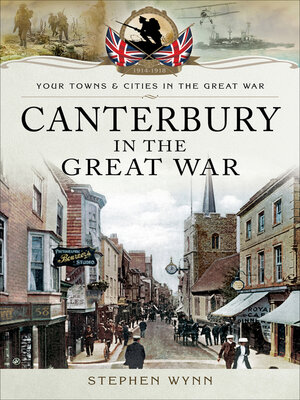
Sign up to save your library
With an OverDrive account, you can save your favorite libraries for at-a-glance information about availability. Find out more about OverDrive accounts.
Find this title in Libby, the library reading app by OverDrive.



Search for a digital library with this title
Title found at these libraries:
| Library Name | Distance |
|---|---|
| Loading... |
A historic profile of the English city of Canterbury during World War I and the conflict's effect on the region and its people. Canterbury had been a garrison town for many years before the war. When hostilities began between Britain and Germany, it was home to the Buffs (East Kent Regiment), who were immediately mobilized for war. They were replaced by the men of the West Kent Yeomanry, a Territorial unit, along with their fellow territorials, the Kent Cyclists, who despite their mode of transport, were an infantry battalion of the British Army, who were formed in 1908. They were tasked with guarding key points along with patrolling the Kent coastline. During the First World War, Canterbury was one of the county's main recruiting areas, particularly for those men from east Kent. By the end of the war, thousands of men had enthusiastically made their way to the town's Drill Hall in St Peter's Lane to sign on the dotted line so that they could do their bit for King and country in the nation's hour of need. Statistics showed that one in four men had enlisted in the British Army. Meanwhile, the town's civilian population did their part for the war. Some worked in the munitions factories and the Kent VAD hospital, while others worked as air raid wardens. These were extraordinary times that relied on ordinary people to pull together and do whatever they could for the common good. Through researching local newspapers of the day, along with letters, diaries, photographs, parish magazines, trade journals, contemporary printed pamphlets, and more, author Stephen Wynn details the stories of this dramatic era.







